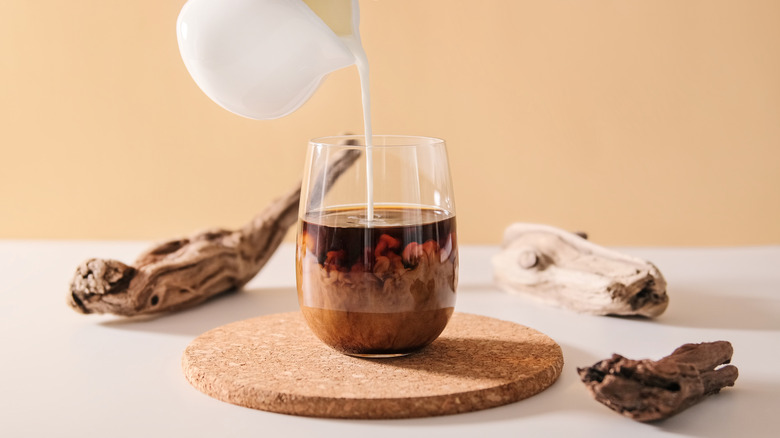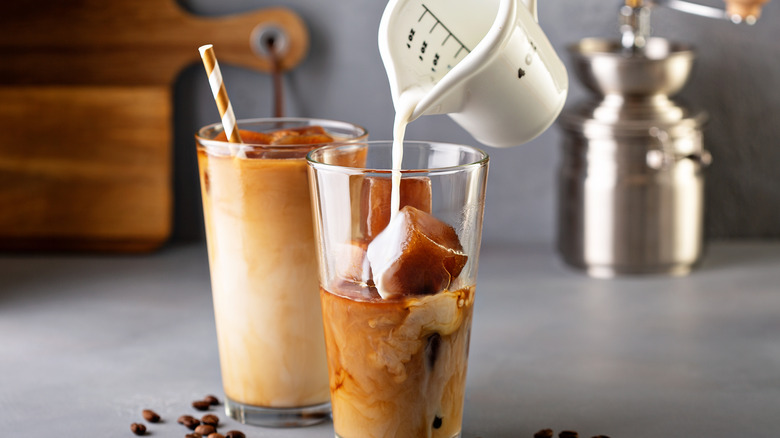How Long Does Coffee Creamer Last In The Fridge?
Even just a tiny dash of creamer can breathe new life into an everyday cup of joe, adding richness to the coffee whilst also boosting its flavor and giving it a sweet touch. Considering how little you need per cup of coffee though, it can take days, if not weeks, to get through an entire bottle.
This begs the question: Just how long do you have before your coffee creamer begins to spoil, and will it even stay fresh long enough for you to use every last drop? As it turns out, you have about a week or two to finish the creamer after opening it, and only if you refrigerate it.
All dairy-based liquid creamers will generally stay fresh for anywhere between one to two weeks in the refrigerator, regardless of whether they are sealed or opened. However, unopened non-dairy liquid creamers laced with ingredients such as casein can last for up to a month beyond the date written them, and they don't necessarily need to be refrigerated. However, once you've cracked open a bottle, it's best to pop it in the fridge where it will keep for about two weeks.
On the flip side, single-serve capsules can last for well over a month or two beyond their best-by dates in the pantry. Once opened, these too should be refrigerated and consumed within three to four days at most.
There are ways to extend coffee creamer's shelf life
You only have a handful of days to use up coffee creamers once they are opened, but there are ways to extend their shelf lives further. For instance, storing creamers in the freezer can keep them fresh for a considerably longer time — anywhere between four to six months. The only thing to keep in mind though is that creamers, like most liquids, can expand when they are frozen. This is why it's best to transfer them from their original packaging, lest they blow up inside the freezer.
There are two ways to freeze creamers. You can either empty the entire bottle into an airtight plastic bag and place that into the freezer, or pour the liquid into an ice cube tray to make single-serve blocks. Once it solidifies, transfer each cube into a sealed bag or container and pop it back into the freezer. Remove the frozen creamer no more than 48 hours before you plan to add it to your coffee, and leave it to thaw overnight in the refrigerator.
If you'd rather stick to storing creamer in the fridge, just be sure to place it on a colder top shelf rather than the door. While doors are excellent for keeping liquids upright, it's a common food storage mistake that you should stop making. The temperature in that area is much more volatile, which can cause your creamer to spoil a lot sooner than it should.
Toss the creamer out if you notice these signs
It's always best to consume creamer while it's still fresh — you could even add the creamy coffee ingredient to your espresso martinis if you're looking for creative ways to use it up. If you're skeptical of its quality though, always be on the lookout for certain telltale signs of spoilage. Fuzzy mold is the first indicator, as is the state of the bottle that the liquid comes in. If it seems to have swelled, chances are that the creamer inside has bacteria.
The smell of the creamer is another noticeable sign. The liquid might have the sweet scent of dairy or a nutty and spicy aroma depending on its flavor, but it should never smell sour or rancid. Even its texture can be a dead giveaway: Fresh creamer will have a smooth and luscious consistency akin to that of cream. If it shows signs of separation or looks more like lumpy, curdled milk than silky white paint, the creamer is well past its prime.
If it passes all these stages of inspection, one last measure is to give it a taste. Take no more than a teaspoon of the creamer and sip it — you'll know if the creamer has seen better days pretty much immediately thanks to its sour taste.



